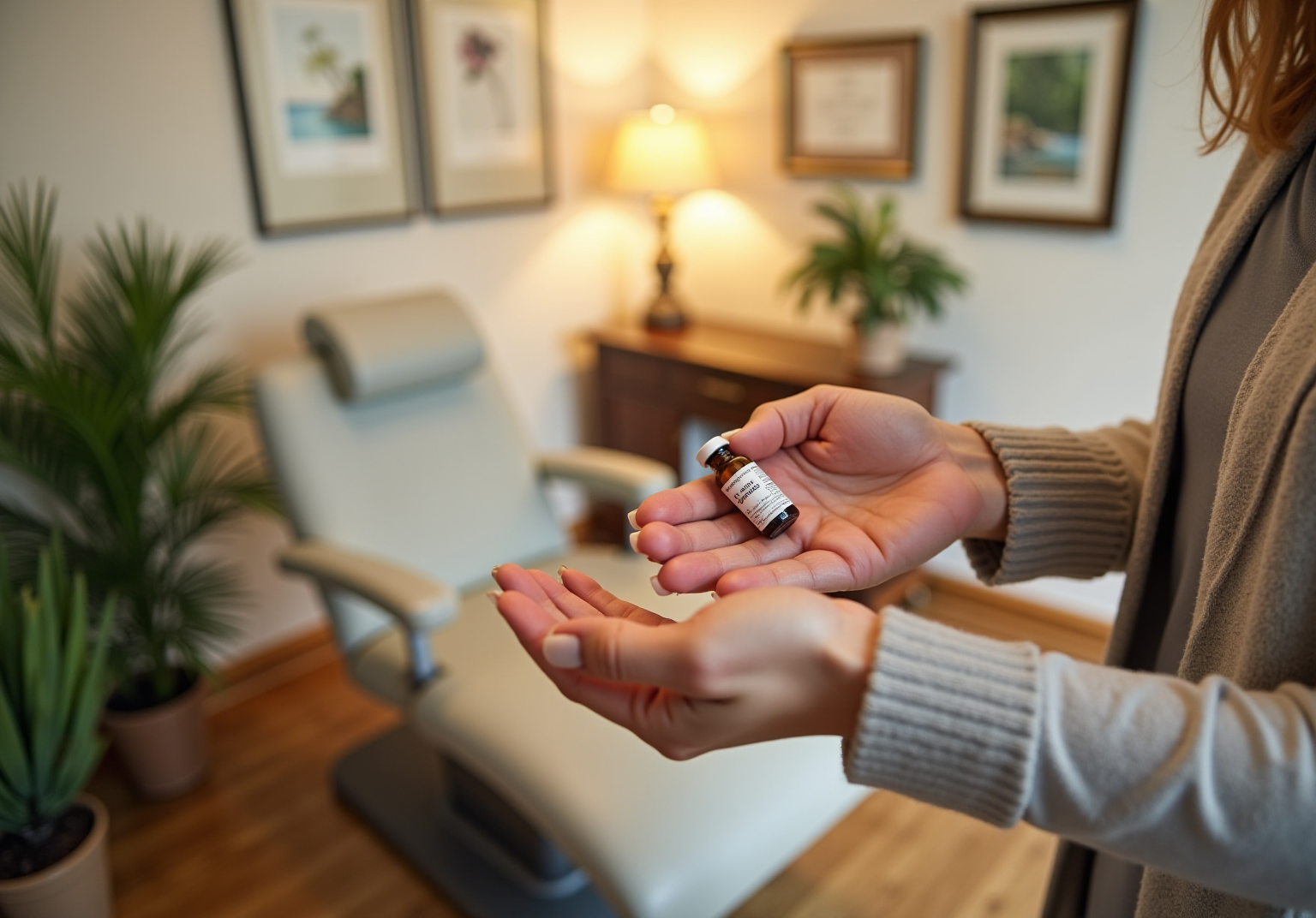Introduction
Navigating the journey of hormonal changes during menopause can feel overwhelming for many women. We understand that the symptoms – like hot flashes and mood swings – can disrupt daily life, leaving you searching for relief. Hormone Replacement Therapy (HRT) shines as a beacon of hope, offering a way to reclaim your comfort and vitality.
So, what are the essential steps to initiate HRT? This article will guide you through the process, empowering you to make informed choices for your health. But let’s also consider the challenges that might arise along the way. How can you ensure that you’re making the right decisions for your well-being? Together, we can explore these questions and find the best path forward.
Understand Hormone Replacement Therapy (HRT)
Hormone Replacement Therapy (HRT) offers a compassionate solution for those grappling with hormonal imbalances, particularly during menopause. If you’re experiencing symptoms like hot flashes, night sweats, or mood swings, know that you’re not alone. At Woodlands Wellness & Cosmetic Center, we understand the challenges you face, and we’re here to help.
HRT typically involves administering hormones, primarily estrogen and progesterone, to counteract the body’s decreased production. Our expert team is dedicated to providing tailored hormone health solutions that cater to your unique needs, including thyroid health services. Research shows that understanding how to get started on HRT can significantly enhance the quality of life for many women navigating menopausal changes. In fact, around 70% to 80% of women report facing menopause-related issues that impact their daily lives, and HRT is recognized as the most effective way to address these challenges.
We believe in the power of personalized treatment plans. HRT can be adjusted based on your individual indicators, medical history, and risk profiles. As conversations around HRT evolve, more women are seeking guidance from healthcare providers on how to get started on HRT, reflecting a growing awareness of its potential benefits. Together, we can explore the best options for you.
At Woodlands Wellness & Cosmetic Center, our commitment is to help you achieve optimal wellness through personalized hormone replacement therapy. We invite you to schedule a consultation with us today. Let’s work together to find the support you need on your wellness journey!
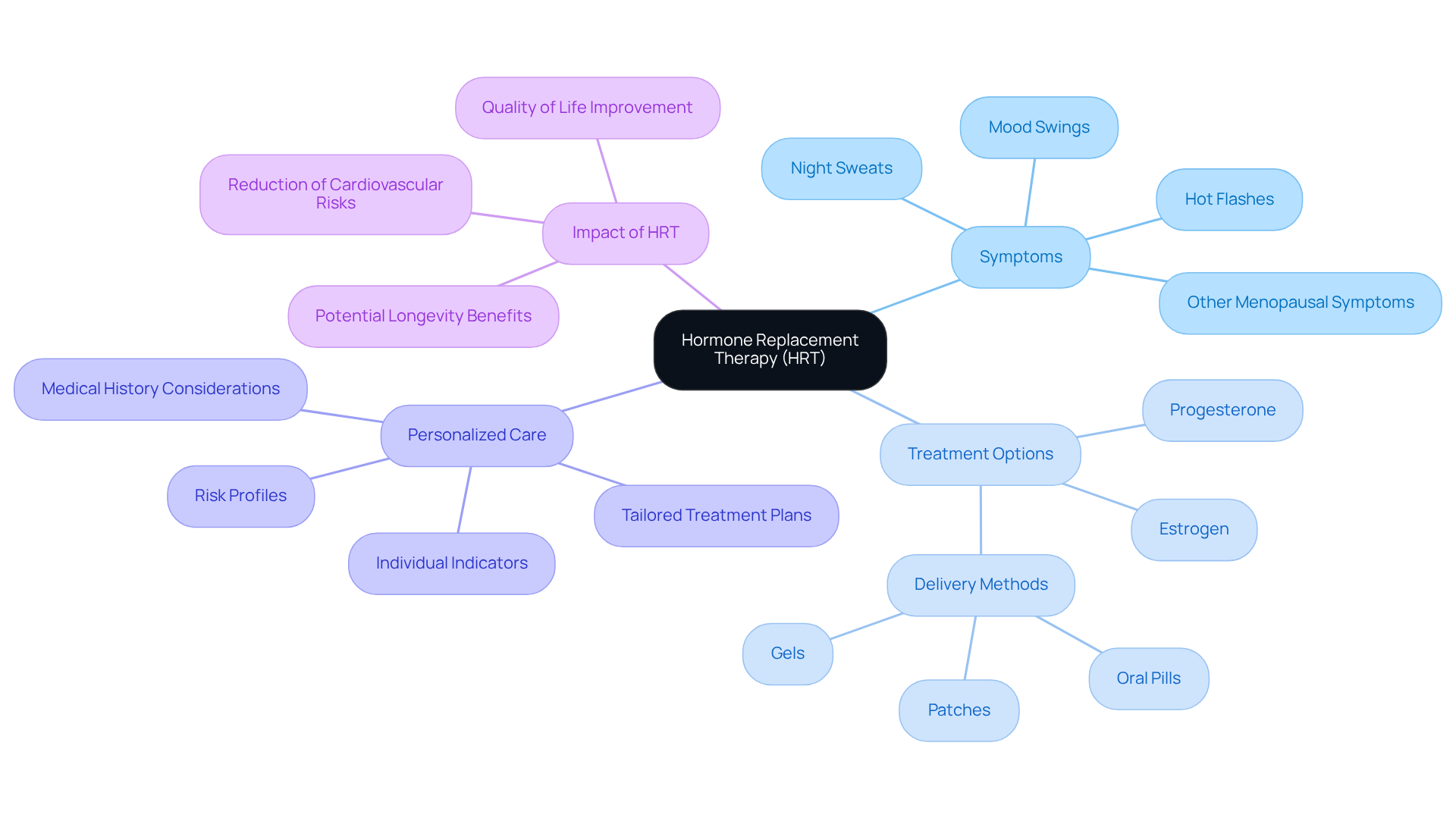
Assess Your Suitability for HRT
It’s essential to assess your suitability before learning how to get started on HRT. We understand that this can be a challenging time, and considering the following factors can help you make an informed decision:
- Age: HRT is generally advised for women between 45 and 55 who are experiencing menopause.
- Symptom Severity: Evaluate how intense your symptoms are. If they significantly disrupt your daily life, HRT may be beneficial.
- Medical History: Discuss any personal or family history of hormone-sensitive cancers, blood clots, or cardiovascular issues with your healthcare professional.
- Lifestyle Factors: Reflect on your diet, exercise, and overall health, as these can impact the effectiveness of HRT.
Taking the time to assess these factors can empower you and your healthcare provider to figure out how to get started on HRT and determine if it is the right choice for you. Remember, you’re not alone in this journey; together we can navigate your options and find the best path forward.

Explore Different Types of HRT
Hormone replacement therapy (HRT) offers a variety of options tailored to your individual needs, each with distinct benefits. At Woodlands Wellness & Cosmetic Center, we prioritize expert hormone health solutions designed with you in mind:
- Estrogen-Only Therapy: If you’ve had a hysterectomy, this therapy can effectively relieve menopausal issues by replenishing diminished estrogen levels.
- Combination Therapy: This approach combines estrogen and progesterone, recommended for women with an intact uterus to help mitigate the risk of endometrial cancer.
- Bioidentical Hormones: These hormones are chemically identical to those produced by your body, making them an appealing option for women seeking a more natural treatment. Recent studies show that bioidentical hormone therapy can significantly improve quality of life, with many users reporting enhanced mood and reduced symptoms.
- Delivery Methods: HRT can be administered through various methods, including pills, patches, gels, and vaginal creams. Each method has distinct absorption rates and possible side effects, so it’s crucial to discuss these with a healthcare professional at Woodlands Wellness & Cosmetic Center to find the best fit for your health needs.
Furthermore, our center offers thyroid health services, further supporting your overall hormonal balance. Understanding how to get started on HRT empowers you to make informed decisions about your HRT, ensuring you select the most suitable approach for your specific circumstances.
Together, we can explore how we can assist you on your journey to optimal wellness. Schedule a consultation today!
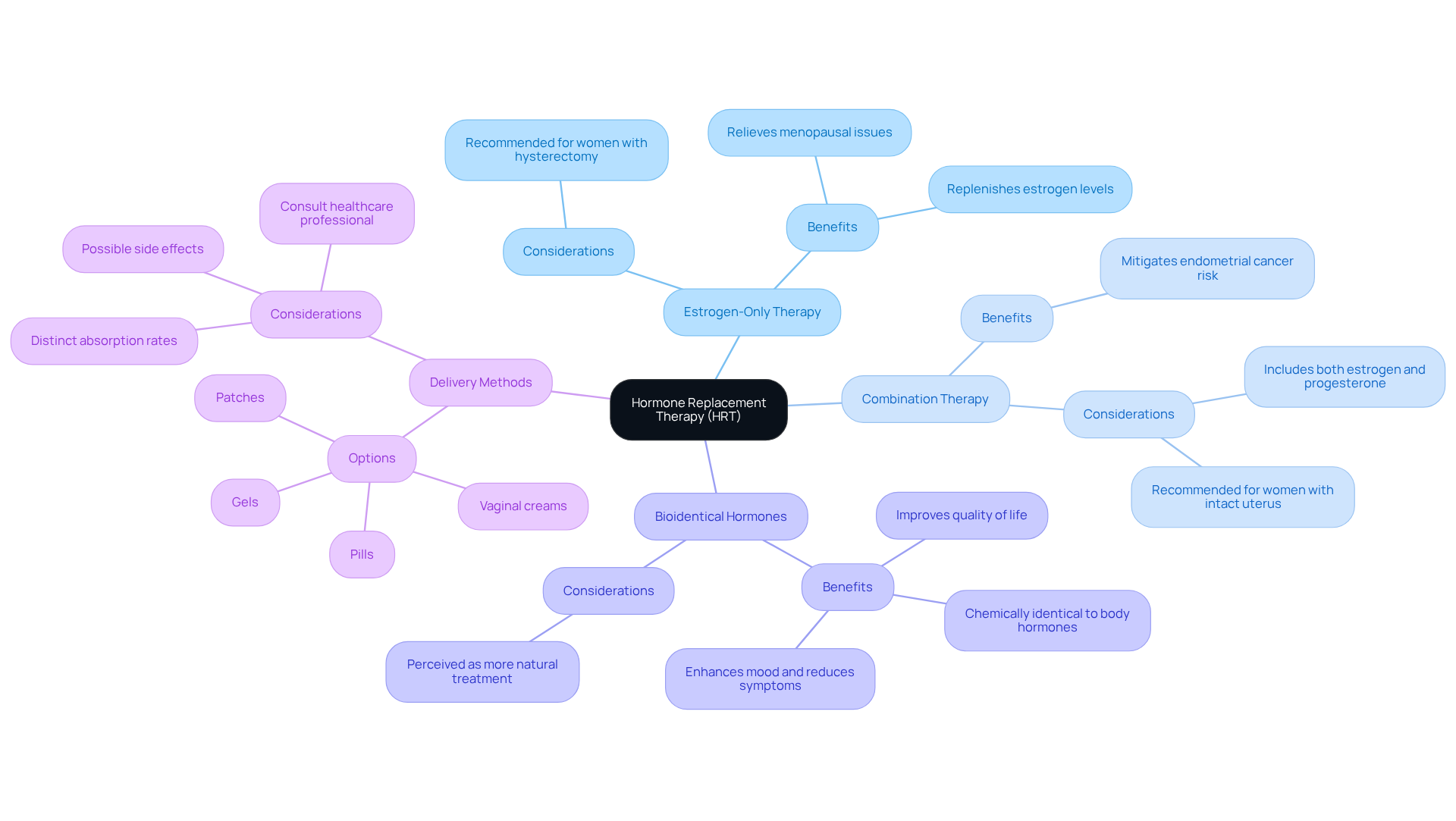
Consult with a Healthcare Provider
It is essential to consult with a healthcare professional to learn how to get started on hrt. We understand that this can be a significant step in your wellness journey, and knowing how to get started on hrt can make all the difference in preparing for your appointment. Here’s how to get ready:
- Document Issues: Keep a thorough log of your conditions, noting their frequency and severity. This will help you discuss your experiences openly with your provider.
- Medical History: Be ready to share your medical background, including any past care and family health concerns. This information is crucial for your healthcare professional to understand how to get started on hrt in relation to your unique situation.
- Questions to Ask: Prepare a list of questions about the benefits, risks, and types of HRT available. Consider asking about the expected timeline for symptom relief and any necessary follow-up appointments. This will empower you to make informed decisions.
- Discuss Lifestyle: Talk about your lifestyle choices, such as diet and exercise, as these can influence the effectiveness of HRT. Sharing this information fosters a collaborative approach to your care.
A comprehensive consultation will assist your healthcare professional in customizing a care plan that best meets your needs, including guidance on how to get started on hrt. Remember, together we can navigate this journey toward better health.
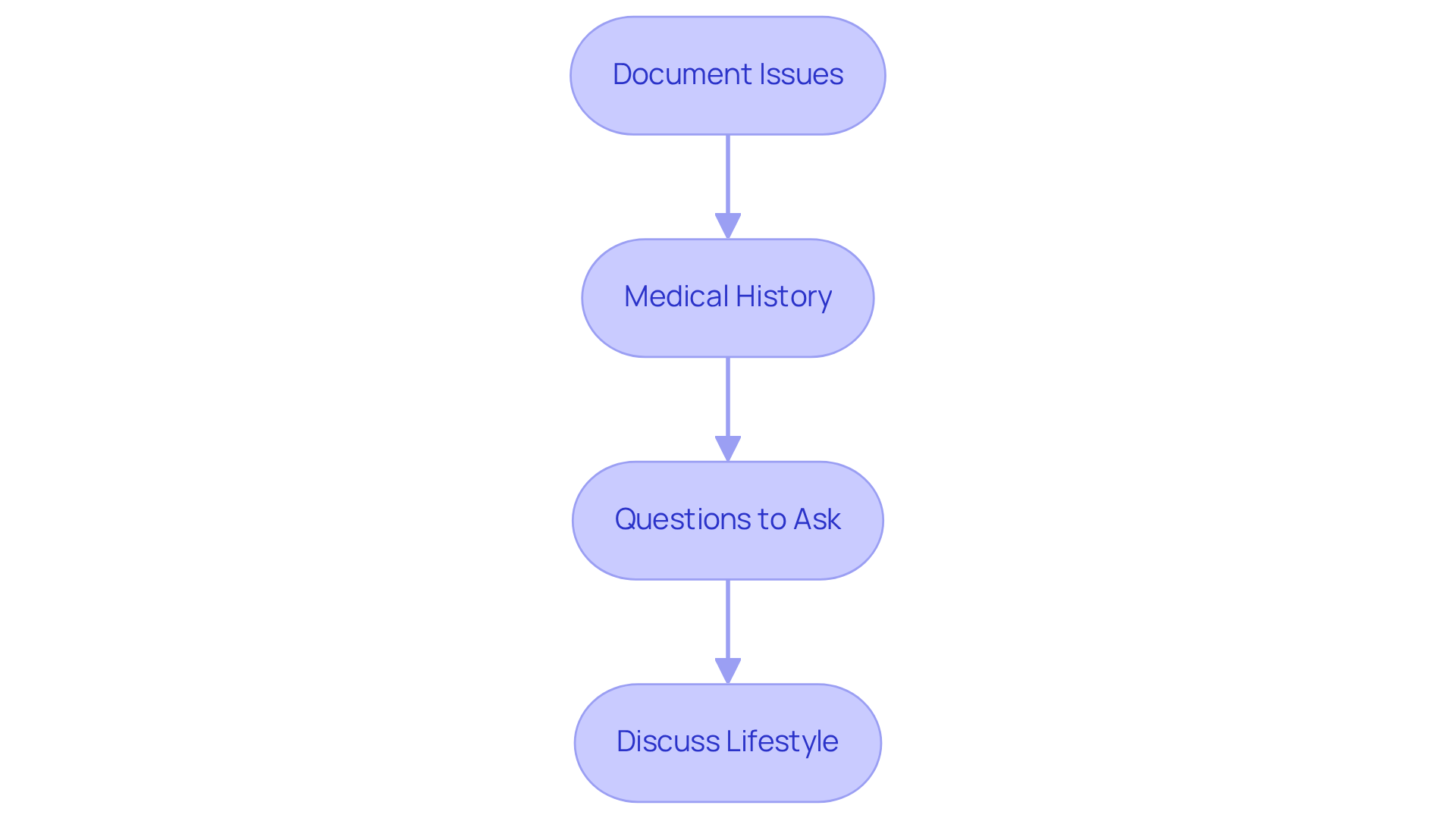
Initiate Your HRT Treatment Plan
Once you and your healthcare provider have agreed on a treatment plan, it’s time to learn how to get started on HRT. We understand that this journey can feel overwhelming, but together we can make it manageable.
-
Start with the Lowest Effective Dose: It’s essential to begin with the smallest amount that effectively reduces your discomfort. This approach helps minimize potential side effects while still providing relief. Experts recommend starting with a dose of 0.0375 mg per day of estradiol in a transdermal system for moderate to severe vasomotor symptoms. If you’re under 60 or within ten years of menopause onset, starting estrogen therapy is advised to maximize benefits.
-
Choose a Delivery Method: Selecting the right delivery method for your HRT is crucial. Discuss your options with your healthcare professional. You might consider patches, pills, gels, or rings. Transdermal patches are often preferred for women at risk of blood clots, as they lower this risk compared to oral therapy, which can slightly increase the risk of blood clots and stroke.
-
Incorporating HRT into your daily routine is essential for learning how to get started on HRT and ensuring consistency. Setting reminders can assist you in staying on track with your care, which is vital for achieving the desired results.
-
Schedule Follow-Up Appointments: Regular check-ins with your healthcare provider are essential to monitor your response to treatment and make any necessary adjustments. Annual assessments can help determine the safest and most effective approach tailored to your individual needs.
Beginning HRT can significantly enhance your quality of life, effectively addressing issues like hot flashes-experienced by approximately 80% of menopausal women-and night sweats. Remember, you’re not alone in this journey, and taking these steps can lead to a more comfortable and fulfilling life.
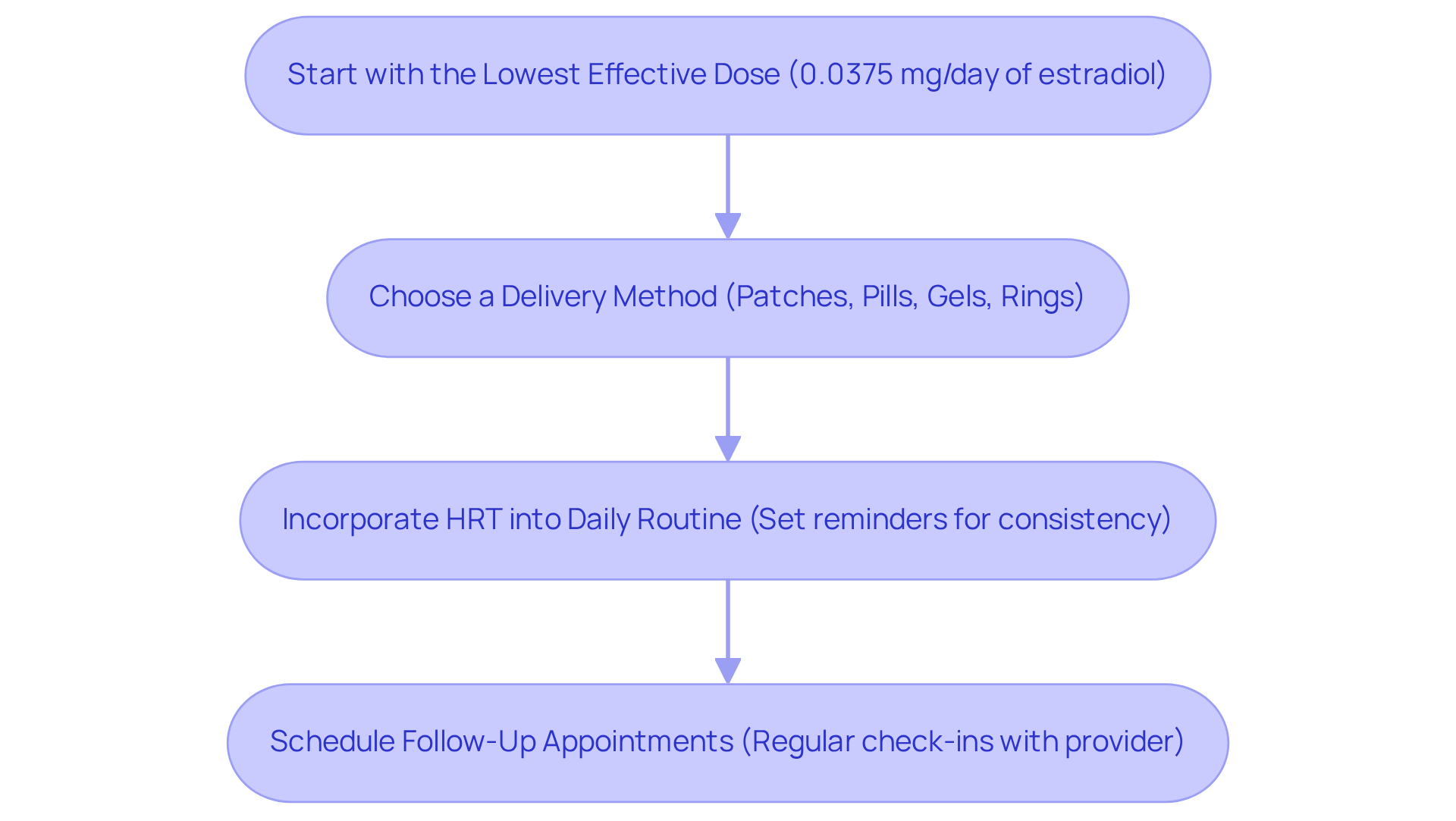
Manage Side Effects and Monitor Progress
As you learn how to get started on HRT, it’s essential to manage any side effects and monitor your progress effectively. We understand that this can be a challenging time, and we’re here to support you.
Common Side Effects: You might experience some side effects like breast tenderness, bloating, or mood changes. Remember, these often subside as your body adjusts to the hormones. It’s completely normal to have these feelings, and you’re not alone in this.
Track Your Symptoms: Keeping a journal of your symptoms and any side effects can be incredibly helpful. This information will be valuable during your follow-up appointments, allowing you and your healthcare provider to make informed decisions together.
Reach Out to Your Healthcare Professional: If side effects persist or become more intense, don’t hesitate to reach out to your healthcare professional. Together, we can discuss potential modifications to your care plan that may help ease your experience.
Regular Monitoring: Scheduling regular follow-ups is crucial to assess how well HRT is working for you. Your provider may recommend blood tests or other assessments to ensure your treatment stays on track. In addition, these check-ins provide an opportunity to address any concerns you may have.
Effective management of side effects and ongoing monitoring will empower you to learn how to get started on HRT and achieve the best outcomes. Remember, you’re not alone on this journey; we’re here to support you every step of the way.
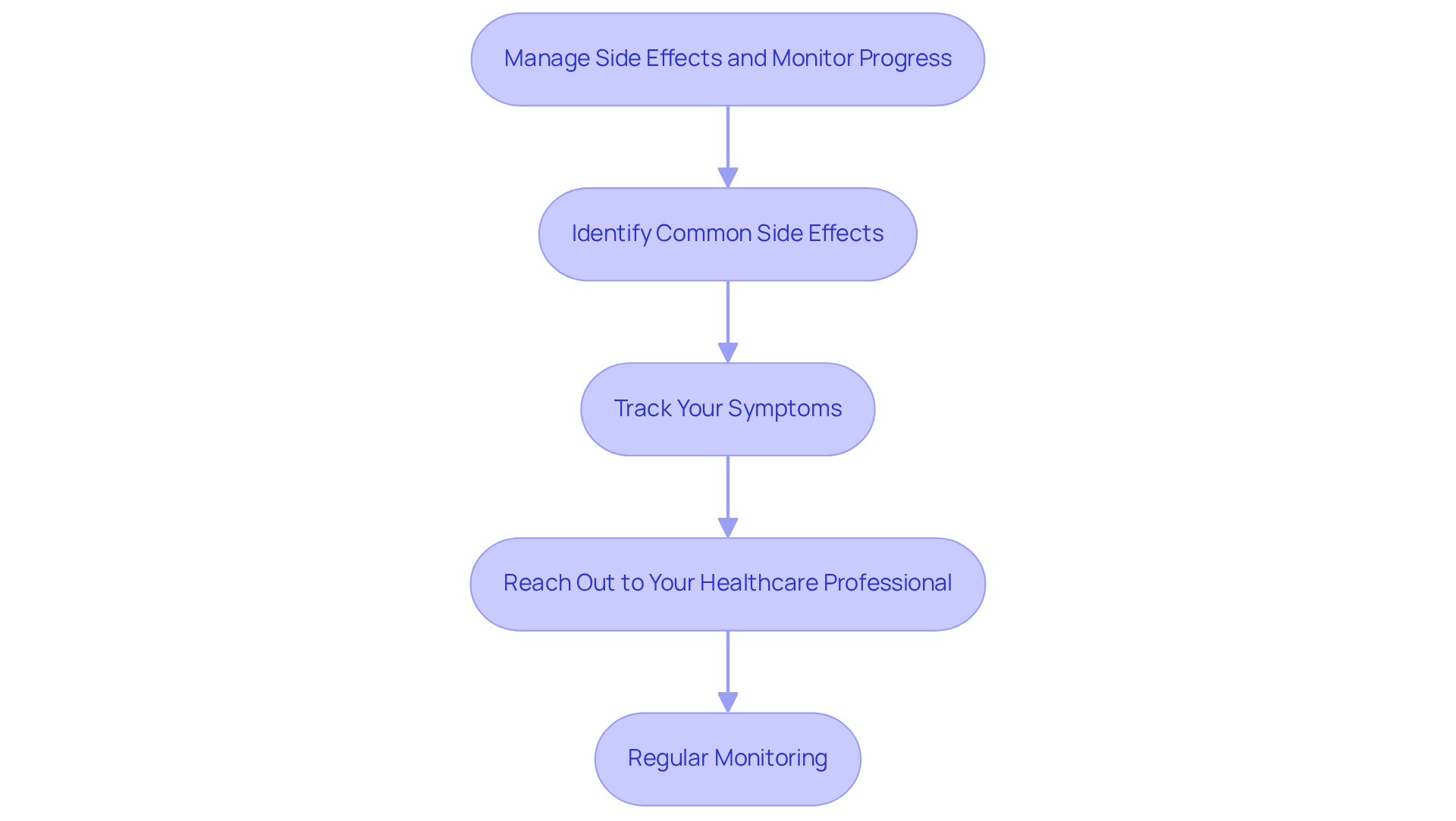
Conclusion
Navigating the journey of Hormone Replacement Therapy (HRT) can be a truly transformative experience for middle-aged women facing the challenges of menopause. This guide highlights essential steps to initiate HRT, emphasizing the importance of personalized care and informed decision-making. By understanding the nuances of HRT, women can reclaim their quality of life and find relief from symptoms that may have been affecting their daily routines.
Key points discussed include:
- Assessing individual suitability for HRT
- Exploring various types of therapies
- The significance of consulting with healthcare providers
Each step-from evaluating symptoms and medical history to selecting the right treatment plan-plays a crucial role in ensuring a safe and effective HRT experience. Furthermore, managing side effects and maintaining regular follow-ups are vital for monitoring progress and making necessary adjustments.
Ultimately, the path to starting HRT is not just about alleviating symptoms; it’s about empowering women to take charge of their health and well-being. By seeking guidance, understanding options, and committing to a personalized treatment plan, women can navigate this phase of life with confidence and support. Together, we can engage with healthcare professionals and stay informed, which are pivotal steps toward achieving optimal wellness through HRT.
Frequently Asked Questions
What is Hormone Replacement Therapy (HRT)?
Hormone Replacement Therapy (HRT) is a treatment that involves administering hormones, primarily estrogen and progesterone, to address hormonal imbalances, particularly during menopause.
What symptoms might indicate the need for HRT?
Symptoms that may indicate the need for HRT include hot flashes, night sweats, and mood swings.
Who is generally advised to consider HRT?
HRT is generally advised for women between the ages of 45 and 55 who are experiencing menopause.
How can HRT improve quality of life for women?
Research shows that understanding how to get started on HRT can significantly enhance the quality of life for many women navigating menopausal changes, with 70% to 80% of women reporting menopause-related issues that impact their daily lives.
What factors should be assessed before starting HRT?
Factors to assess include age, symptom severity, medical history (such as hormone-sensitive cancers, blood clots, or cardiovascular issues), and lifestyle factors like diet and exercise.
How does Woodlands Wellness & Cosmetic Center approach HRT?
Woodlands Wellness & Cosmetic Center emphasizes personalized treatment plans for HRT, adjusting the therapy based on individual indicators, medical history, and risk profiles.
What should I do if I’m considering HRT?
If you are considering HRT, it is recommended to schedule a consultation with a healthcare provider to discuss your symptoms and assess your suitability for the therapy.









